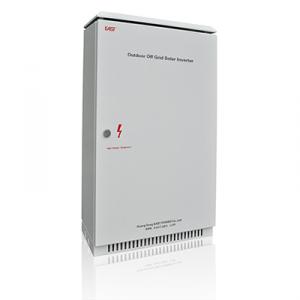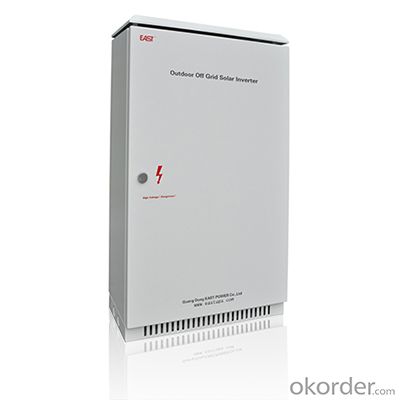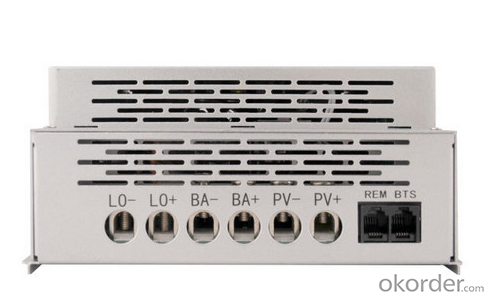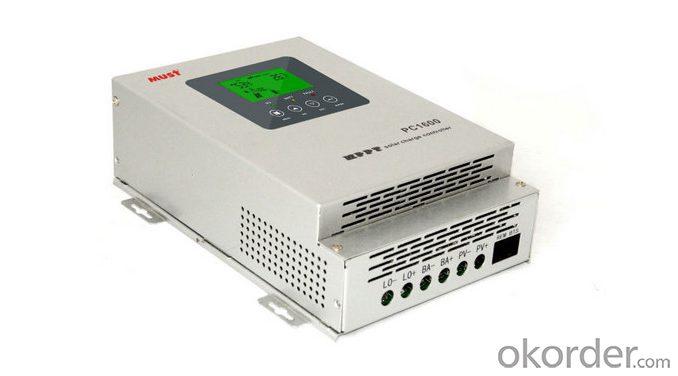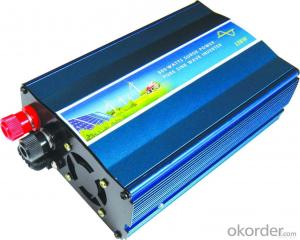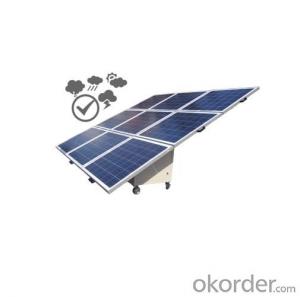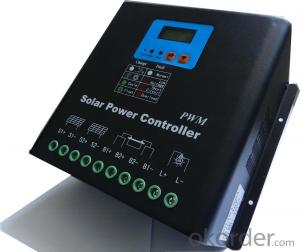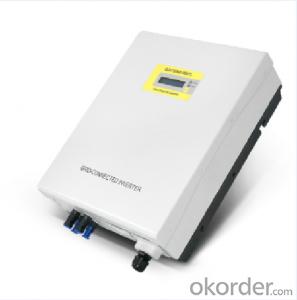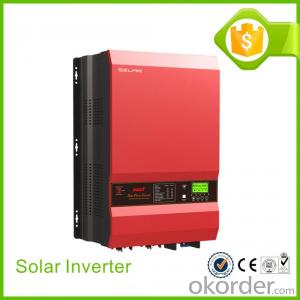5000W Outdoor Off-Grid Solar Inverter Specially Designed for Outdoor Communication Equipment
- Loading Port:
- China main port
- Payment Terms:
- TT or LC
- Min Order Qty:
- 1 pc
- Supply Capability:
- 1000 pc/month
OKorder Service Pledge
OKorder Financial Service
You Might Also Like
Outdoor Off-Grid Solar Inverter 500W-2000W
EA-GF outdoor series is specially designed for outdoor communication equipment, network equipment, traffic control systems; it is also for corner of the city, the countryside, and the mountains. The whole unit adopts high and low temperature resistance, corrosion resistance, dustproof, waterproof with multi-format mode, MPPT control, online regulation, short circuit protection, output frequency adaptable, output overload protection, battery charge management, monitoring, energy saving,environmental protection and other functions; This series of products can effectively ensure communication, network, traffic control equipment's power supply and operation stably, and be good partner of the outdoor communications equipment, network equipment, and traffic control systems.
● Special design for outdour use
● Multi-setting
※ Can adjust the use mode according to the configuration status and sun source status: PV priority or AC priority mode;
※ Can select the charging current based on the configured capacity of the battery.
● High reliability
※ Independent MPPT (Maximum Power Point Tracking) control microprocessor system
※ Independent inverter microprocessor control system
※ Many kinds of protection for overcharge, over-discharge, short-circuit, overload ect., and special PV reverse connection
protection as well
● Isolated and pure sine wave technology
● Advanced MPPT control system
● Intelligent charge management
● LED display mode
● Wide input range
● High-speed synchronous conversion
● Friendly alarm system
● Unattended and intelligent monitoring
● No-load off function (Option)
● Frequency auto sense
● Intelligent communication port (option)
Model | GF500-HW | GF1000-HW | GF1000-HW | GF1500-HW | GF2000-HW |
Power | 500W | 1000W | 1000W | 1500W | 2000W |
Battery Voltage | 24Vdc | 48Vdc | |||
Working Mode | PV(Photovoltaic priority) / AC (AC priority) Optional | ||||
PV | |||||
Input Voltage Range | 24Vdc – 45Vdc | 48Vdc – 90Vdc | |||
PV Panels Configuration (Suggestion) (vmp) | 30Vdc – 36Vdc | 60Vdc – 71Vdc | |||
PV Panels Configuration(Suggestion) (Imp≤rated current) | ≤40A | ≤60A | ≤40A | ≤60A | ≤80A |
Max Charge Current | 10-40A Optional | 10-60A Optional | |||
Max Transfer Efficiency | 98% | ||||
Display | |||||
Display Panel | LED | ||||
Mains Status(option) | |||||
Input Voltage Range | 100/110/120/220/230/240VAC±25%(customized) | ||||
Input Frequency Range | 45-65Hz (over this range transfer to inverter model auto.) | ||||
Output Voltage Range | 220Vac± 10% | ||||
MAX Input PF (AC/DC) | 98% | ||||
MAX Efficiency | 96% | ||||
MAX Charge Current | 12A Max( battery discharge ends; Start charging when PV charge current less than the set value) | ||||
AC Over Load | 110% load, after 255s, transfer to bypass,120% load ,after 60s transfer to bypass, 150% load, after 10s, transfer to bypass, auto recover after decrease load | ||||
Short Circuit | Input fuse / breaker | ||||
Inverter Output | |||||
Output Voltage | 220Vac± 5% | ||||
Output Frequency | 50 Hz / 60Hz ± 1% Auto. | ||||
Output PF | 1.0 | ||||
Distortion | Line load≤ 5% | ||||
PV-AC Transfer Time | 5 ms typical value; Max.8 ms | ||||
Max Efficiency | 84.5% | ||||
Nverter Overload | 110% load 255s shut down,120% load 60s shut down,150% load 1s shut down | ||||
No Load Off (Optional) | Load< 5% after 1min , transfer to bypass mode | ||||
Short Circuit | System Shut down automatically | ||||
AC Abnormal | Beeping 1/4s,auto silence after 40s | ||||
Alarm | |||||
Battery Low | Beeping 5/ 1s | ||||
Over Load | 1/ 1s | ||||
Communication Port (optional) | Rs232 / USB / SNMP(Setup available for regular start/shutoff) | ||||
Dry Contact | PV failure、battery low-voltage、overload、bypass、 inverter failure/ remote start generator dry contact signal | ||||
Others | |||||
Output Sockets | RS232/USB/SNMP(Setup available for regular start/shutoff) | ||||
Surge Protection | Class | ||||
EMC | CEN62040-2:2006;EN61000-3-2:2006; EN61000-3-3:2008 | ||||
IP Class | IP55 | ||||
Ambient Temperature | 0℃ ~ 40℃ | ||||
Ambient Humidity | 10℃ ~ 90℃ (Non Condensed) | ||||
Noise | ≤ 50dB | ||||
Working Altitude | 2000m(Every 100m increase derating 1%) | ||||
Inverter Size WxDxH(mm) | 280x600x900(with space for 2units 100A-200Ah battery) | 540x600x900 (with space for 4units 100A-200Ah battery) | |||
Packing Size WxDxH(mm) | 320x605x975 | 615x660x975 | |||
· Q. What is an UPS and What it is for ?
An uninterruptible power supply (UPS) is a device that allows your computer or telephone switch or critical equipement to keep running for at least a short time or longer time when the primary power source is lost. It also provides protection from power surges, spikes, brownouts, interference and other unwanted problems on the supported equipment.
· Q. How long the UPS to run when power goes?
This can take 3 paths.
1.You can pick a UPS that is rated for pretty much the full VA you need so it will be running at 100% of capability and will thus last 'n' minutes.
2.You can pick a UPS that is rated at a much higher VA value than you really need so, for example, is running at 50% of capability and will thus last for longer than the UPS from option 1.
3.You can use extra external battery packs to run for longer. If charging capability allows, the more and the bigger batteries you take with, the longer time UPS runs.
or using a generator after about 6 hours, it will be more cost-effective, with a short runtime UPS to bridge the generator start-up gap.
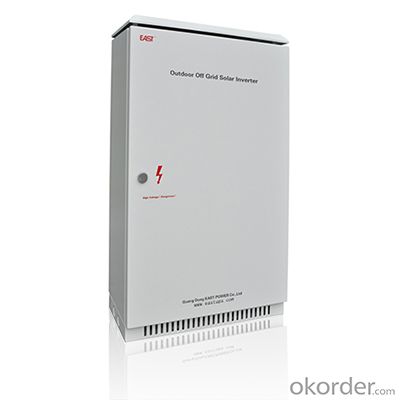
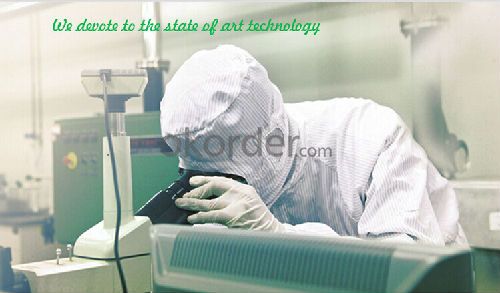
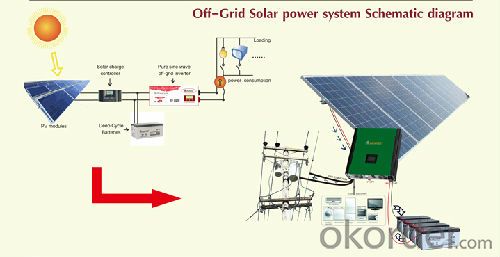
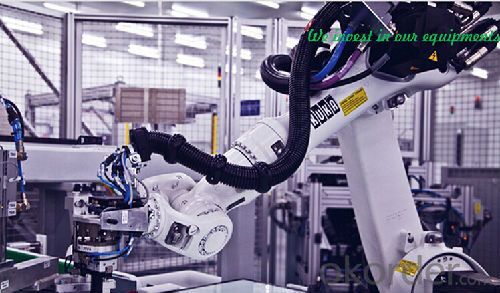
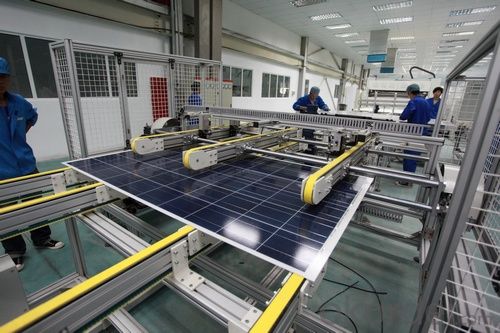
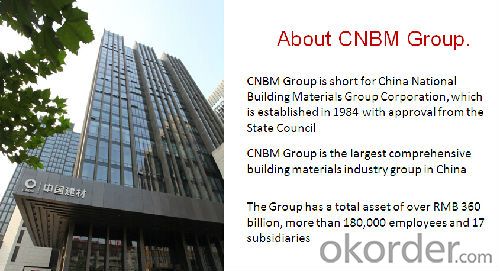
- Q: How do you calculate the efficiency of a solar inverter?
- The efficiency of a solar inverter can be calculated by dividing the output power of the inverter by the input power it receives from the solar panels. This ratio is then multiplied by 100 to express the efficiency as a percentage.
- Q: What are the installation requirements for a solar inverter?
- The installation requirements for a solar inverter typically include a suitable mounting location, proper ventilation, and a stable electrical connection. The inverter should be installed in a shaded area, away from direct sunlight and extreme temperatures. It should be mounted securely on a sturdy surface, such as a wall or a rack. Adequate ventilation is necessary to dissipate heat generated during operation. Additionally, the inverter must be connected to the electrical panel or grid with the appropriate wiring and circuit breakers, following local electrical codes and regulations.
- Q: Can a solar inverter be used in systems with multiple solar arrays?
- Yes, a solar inverter can be used in systems with multiple solar arrays. The inverter has the capability to convert the DC power generated by each solar array into AC power that can be used in the electrical system. It can manage and optimize the power output from multiple arrays, ensuring efficient and reliable operation of the overall solar system.
- Q: Can a solar inverter be used in areas with high dust and dirt accumulation?
- Yes, a solar inverter can be used in areas with high dust and dirt accumulation. However, it is important to regularly clean and maintain the inverter to prevent any performance issues caused by the accumulation of dust and dirt.
- Q: What is the maximum short-circuit current that a solar inverter can handle?
- The maximum short-circuit current that a solar inverter can handle depends on its specific design and specifications. It varies from one model to another, but typically, solar inverters are designed to handle short-circuit currents within the range of 10 to 25 times their maximum continuous output current. However, it is crucial to consult the manufacturer's guidelines or product specifications for the exact maximum short-circuit current rating of a specific solar inverter model.
- Q: Can a solar inverter be used in a solar-powered telecommunications system?
- Yes, a solar inverter can be used in a solar-powered telecommunications system. A solar inverter is an essential component in such systems as it converts the DC (direct current) electricity generated by the solar panels into AC (alternating current) electricity, making it compatible with the telecommunication devices and equipment.
- Q: Can a solar inverter be used in regions with high levels of dust or debris?
- Yes, solar inverters can be used in regions with high levels of dust or debris. However, it is important to regularly clean and maintain the solar panels and inverters to ensure optimal performance and prevent any potential damage caused by the accumulation of dust or debris.
- Q: Can a solar inverter be used in regions with high temperature extremes?
- Yes, solar inverters can be used in regions with high temperature extremes. However, it is important to choose inverters that are specifically designed to handle such conditions, as excessive heat can affect their performance and lifespan. These inverters should have features like advanced thermal management systems, wide temperature operating ranges, and robust cooling mechanisms to ensure optimal functioning and durability even in extreme temperatures.
- Q: Can a solar inverter be used with solar-powered signage systems?
- Yes, a solar inverter can be used with solar-powered signage systems. A solar inverter is responsible for converting the direct current (DC) produced by the solar panels into alternating current (AC) that can be used to power electrical devices. Since solar-powered signage systems also require AC power to operate, a solar inverter is necessary to ensure compatibility and efficient energy conversion.
- Q: How does a solar inverter handle partial shading on solar panels?
- A solar inverter handles partial shading on solar panels by utilizing a technique called Maximum Power Point Tracking (MPPT). MPPT allows the inverter to constantly monitor and adjust the voltage and current levels of each solar panel to ensure that it operates at its maximum power output despite shading. This is achieved by dynamically redistributing power between the shaded and unshaded panels, optimizing the overall energy generation of the entire solar array.
Send your message to us
5000W Outdoor Off-Grid Solar Inverter Specially Designed for Outdoor Communication Equipment
- Loading Port:
- China main port
- Payment Terms:
- TT or LC
- Min Order Qty:
- 1 pc
- Supply Capability:
- 1000 pc/month
OKorder Service Pledge
OKorder Financial Service
Similar products
Hot products
Hot Searches
Related keywords
